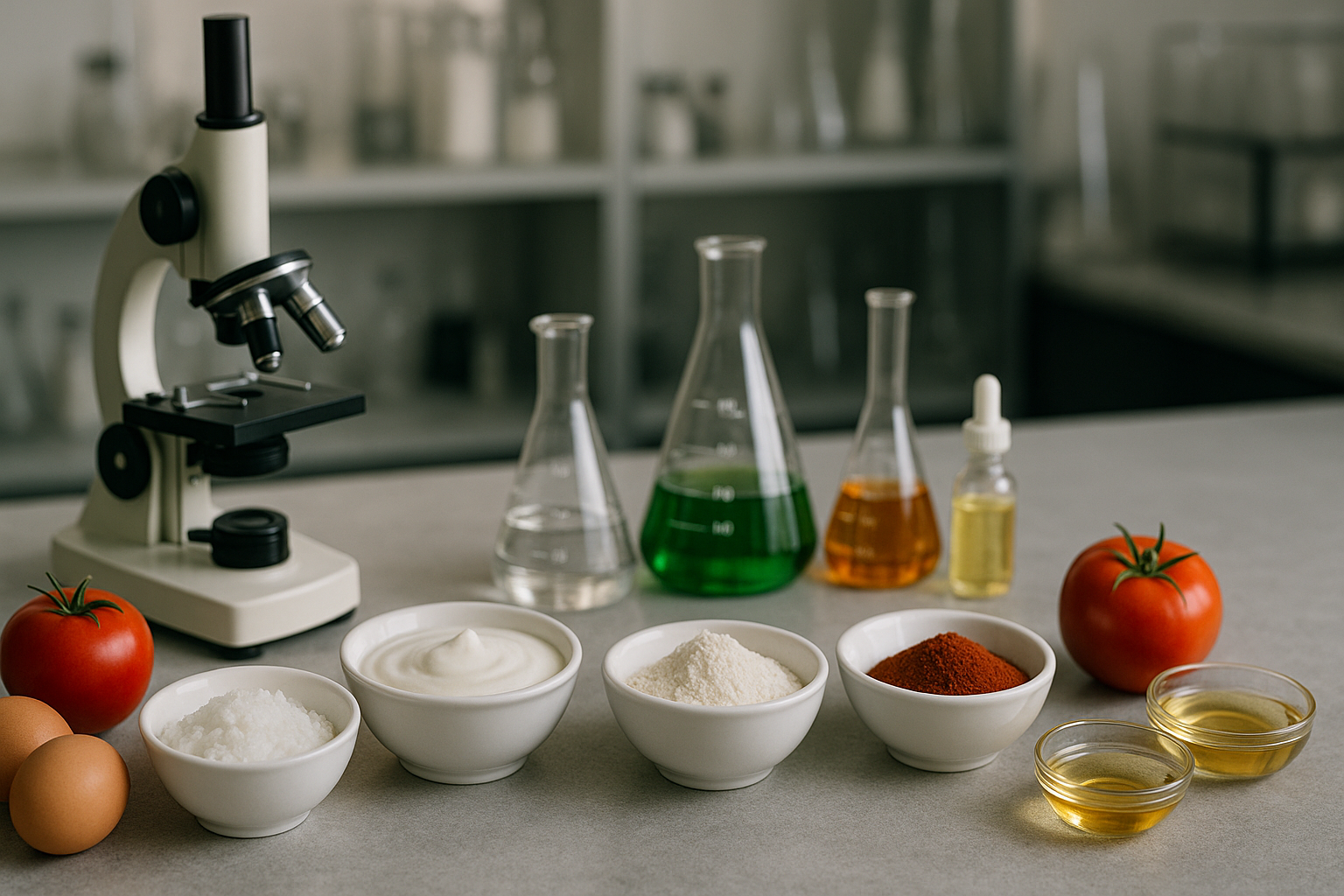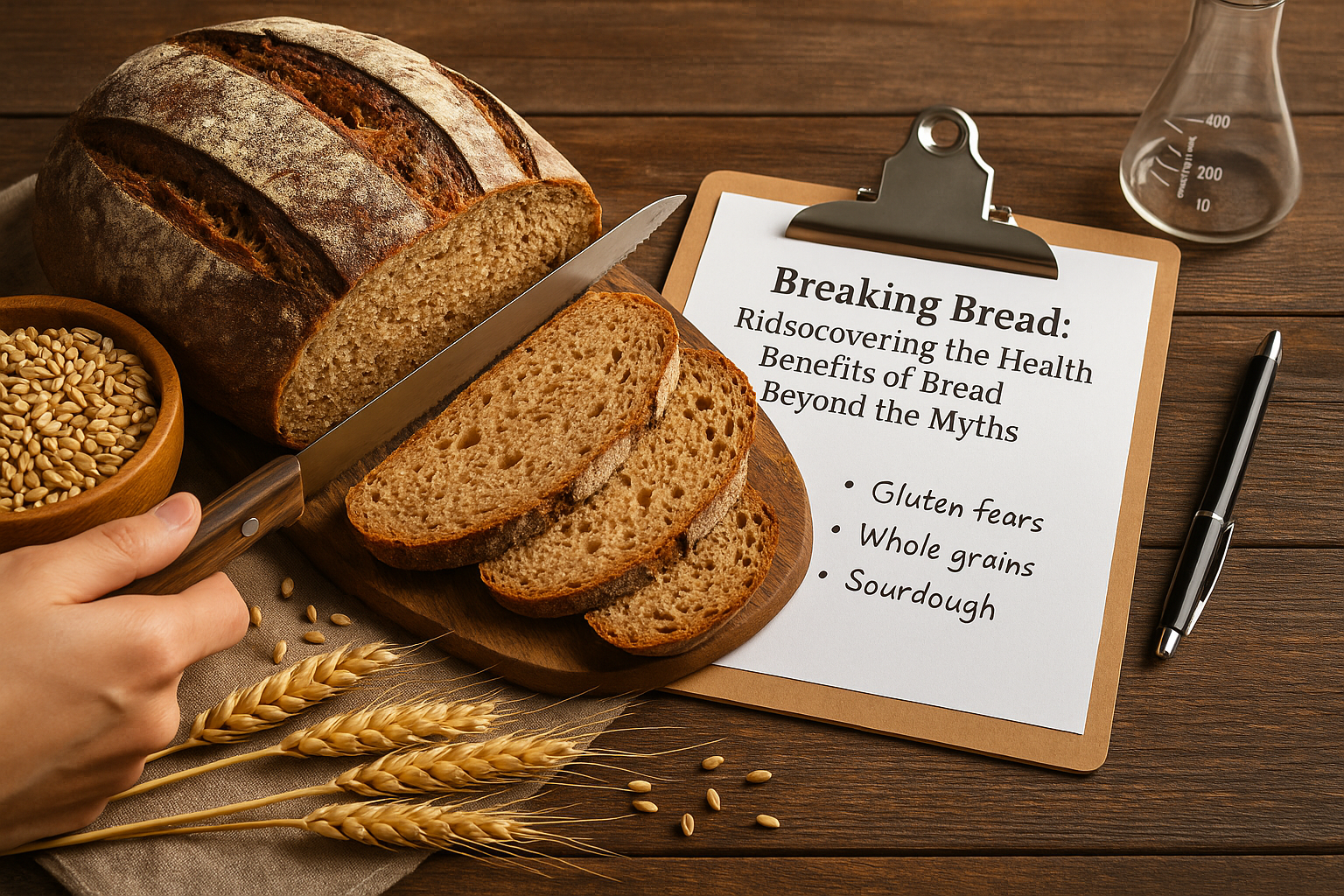Introduction
Xanthan gum is one of the most widely used hydrocolloids in food science and modern cooking. Known for its ability to thicken, stabilize, and improve texture, it is especially valuable in gluten-free baking and sauces. This guide explores what xanthan gum is, how it works, its benefits, and how to use it at home or in professional kitchens.
Table of Contents
Benefits & Functional Properties
Common Pairings (Compatibility Matrix)
Quick Answers About Xanthan Gum
What is xanthan gum made of?
Xanthan gum is a natural polysaccharide made by fermenting simple sugars (like glucose or sucrose) with Xanthomonas campestris. The fermented material is purified, dried, and milled to a fine powder that thickens and stabilizes foods.
Is xanthan gum natural or artificial?
It’s considered a natural ingredient because it’s produced via fermentation—similar to yogurt or vinegar—rather than synthesized from petrochemicals. Most labels list it as “xanthan gum.”
How much xanthan gum should I use?
Start low: typically 0.1–0.5% of total recipe weight (about 1–5 g per 1 kg). Sprinkle while blending for smooth dispersion, then adjust to reach your target thickness.
What can I substitute for xanthan gum?
For simple thickening, try guar gum. For bread structure, psyllium husk works well. For binding in vegan bakes, hydrated chia or flax “gel” can help—results differ by recipe.
Why is xanthan gum used in gluten-free baking?
It mimics gluten’s elasticity, helping doughs trap gas, rise properly, and hold shape. The result is better crumb structure and improved moisture in gluten-free breads.
Does xanthan gum work in hot and cold recipes?
Yes—xanthan hydrates in hot or cold liquids and remains stable across a broad pH and temperature range, making it reliable for sauces, drinks, and frozen desserts.
What is Xanthan Gum?
Xanthan gum is a polysaccharide produced through fermentation of sugars by the bacterium Xanthomonas campestris. Once dried and powdered, it acts as a hydrocolloid — a substance that forms gels or thickens when dispersed in water.
In food applications, it creates smooth, stable textures without altering flavor, making it indispensable for chefs, bakers, and food manufacturers.
How is Xanthan Gum Made?
- Fermentation: Glucose, sucrose, or lactose is fermented by Xanthomonas campestris.
- Precipitation: Alcohol (usually isopropyl) is added to precipitate the gum.
- Drying & Milling: The gum is dried into a powder and ground into fine particles.
- Packaging: It’s then standardized and sold for food or industrial use.
Culinary Uses of Xanthan Gum
- Gluten-Free Baking: Replaces gluten’s elasticity in breads, cakes, and cookies.
- Sauces & Dressings: Prevents separation of oil and water for smooth consistency.
- Beverages: Keeps pulp suspended in fruit juices.
- Frozen Desserts: Prevents ice crystal formation in ice cream and sorbets.
- Foams & Molecular Gastronomy: Stabilizes foams and culinary experiments.
Benefits & Functional Properties
- Works in very small amounts (0.1–1% by weight).
- Provides stable viscosity even under heat, pH, or freezing.
- Improves mouthfeel and creaminess.
- Vegan, gluten-free, keto-friendly, and widely approved for safe use.
Common Pairings (Compatibility Matrix)
Xanthan gum pairs especially well with:
- Guar gum → Creates strong elasticity for gluten-free dough.
- Locust bean gum → Improves ice cream body and creaminess.
- Carrageenan → Enhances gel stability in dairy products.
👉 See our full Hydrocolloid Compatibility Matrix for more pairings.
Recipes with Xanthan Gum
- Gluten-Free Pizza Dough — Use xanthan + guar gum for chewiness.
- Vinaigrette Dressing — 0.2% xanthan keeps oil and vinegar perfectly blended.
- Fruit Smoothies — Adds a creamy, milkshake-like texture without dairy.
👉 Try our free Food Calculators to adjust recipe ratios.
Where to Buy Xanthan Gum
Cape Crystal Brands offers premium-quality xanthan gum for both home cooks and professionals. 👉 Shop Xanthan Gum Now
Related Thickening Gums
Explore other plant-based thickeners that improve texture, stability, and viscosity:
Not all hydrocolloids behave the same way. Some are best for building viscosity and stabilizing liquids, while others are true gelling agents that create firm or elastic structures. A few can do both, depending on the partners they’re combined with. The table below highlights the difference between thickening and gelling functions at a glance:
Thickening vs Gelling Function of Hydrocolloids
Full Companion Table| Hydrocolloid | Primary Function | Notes |
|---|---|---|
| Xanthan Gum | Thickener / Stabilizer | Shear-thinning; excellent for sauces and dressings. |
| Guar Gum | Thickener | Adds viscosity in cold and hot systems; synergizes with xanthan gum. |
| Locust Bean Gum | Thickener + Gel Synergist | Alone it thickens; forms gels in synergy with carrageenan or xanthan. |
| Carrageenan (Kappa) | Gelling Agent | Firm, brittle gels; works with potassium and dairy proteins. |
| Carrageenan (Iota) | Gelling Agent | Forms soft, elastic gels with calcium; good freeze–thaw stability. |
| Agar | Gelling Agent | Strong, brittle gels; sets at high temp and remains stable when reheated. |
| Pectin (HM) | Gelling Agent | Gels with sugar + acid; used in jams and jellies. |
| Pectin (LM) | Gelling Agent | Forms gels with calcium; ideal for low-sugar products. |
Frequently Asked Questions (FAQs)
Is xanthan gum safe?
Yes. It is FDA-approved and widely recognized as safe when used in food.
How much should I use in recipes?
Typically, 0.1–0.5% of the total recipe weight. Start small — a little goes a long way.
Can I substitute xanthan gum?
Yes. Alternatives include guar gum, psyllium husk, or chia gel depending on the application.
Why is xanthan gum used in gluten-free baking?
It replaces gluten’s structural role, improving elasticity and texture in dough.
Does it work in hot and cold recipes?
Yes. Xanthan gum remains stable across temperature and pH variations.
Is xanthan gum vegan and keto?
Yes, it’s plant-derived and contains no net carbs.
Keep Learning with Cape Crystal Brands





